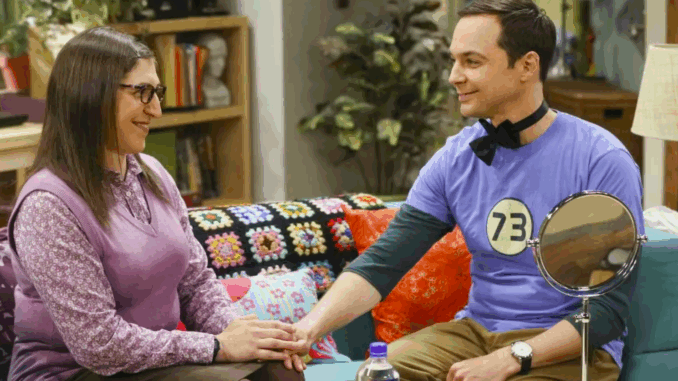
“You may sit wherever you like—as long as it’s not my spot.”
If you’ve ever watched The Big Bang Theory, you already know: Sheldon Cooper has a designated spot on the couch. It’s not just a preference—it’s a doctrine. From Season 1 through the series finale, Sheldon’s devotion to “his spot” is a running gag. But the joke, as with most great comedy, reveals something deeper: his need for comfort, control, and structure in a chaotic world.
Origins of the spot
As Sheldon explains in Season 2, Episode 2 (“The Codpiece Topology”), his spot offers optimal conditions: it faces the television at the perfect angle, avoids direct sunlight, and benefits from a cross breeze. It’s a logical choice based on objective reasoning. But as the series unfolds, it becomes clear that this isn’t about ergonomics—it’s about psychological security.
In a world that often overwhelms Sheldon—both socially and emotionally—his spot serves as an anchor. It is his comfort zone, both literally and figuratively.
A symbol of structure
Sheldon’s life is built on rigid structure: schedules, contracts, rituals. The spot is a physical representation of that structure. When someone (especially Penny) dares to sit in it, his reaction is immediate and visceral. The violation of “spot law” is an assault on his personal order.
And yet, the audience laughs—not just because of his overreaction, but because deep down, we all relate. We all have a “spot”—a certain chair at the dinner table, a side of the bed, a seat on the bus that just feels right.
The psychology of place
From a psychological standpoint, Sheldon’s obsession with his spot touches on territoriality—a behavior humans share with animals. It’s about claiming space, asserting control, and feeling safe.
But for someone like Sheldon, who is neurodivergent and struggles with social nuance, this spatial claim carries even more weight. His spot becomes a boundary—a nonverbal way of telling the world where he ends and the rest begins.
Conflict, comedy, and compromise

Some of the show’s funniest moments stem from characters challenging Sheldon’s rules. When Penny, Amy, or even Leonard occupy his spot, we see a miniature war unfold. But over time, Sheldon’s reactions soften. By later seasons, we even see him willingly give up his spot—a massive gesture of growth.
In Season 7, Episode 9 (“The Thanksgiving Decoupling”), Sheldon ends up sitting in an uncomfortable dining chair, surrounded by noise, food, and social awkwardness. And yet, he endures it—for his friends.
The spot may be sacred, but it is not invincible.
The spot as a storytelling device
From a writing standpoint, the spot is a brilliant narrative tool. It grounds scenes physically (we always know where Sheldon will sit), but it also gives writers a way to measure his emotional growth.
In Season 10, when Sheldon moves in with Amy, he no longer has that spot. He tries to recreate it, but it’s not quite the same. That discomfort reflects his growing pains—learning to share space, surrender control, and adapt.
By the time Sheldon sits in a different seat without protest, the audience knows: this isn’t just character development—it’s character transformation.
The comfort of constancy
Ultimately, Sheldon’s spot is about more than a cushion on a couch. It’s about identity, safety, and the small rituals that help us survive a big, unpredictable world.
For a character so often perceived as rigid and difficult, the spot offers insight into his vulnerability. It’s not just a punchline—it’s a window into his soul.
And maybe that’s what made The Big Bang Theory so powerful: beneath the comic quirks were emotional truths we all recognize. Like the need to feel at home. Even if that “home” is just the left cushion of a brown leather couch, 32 inches from the television, directly in the path of the cross breeze.
